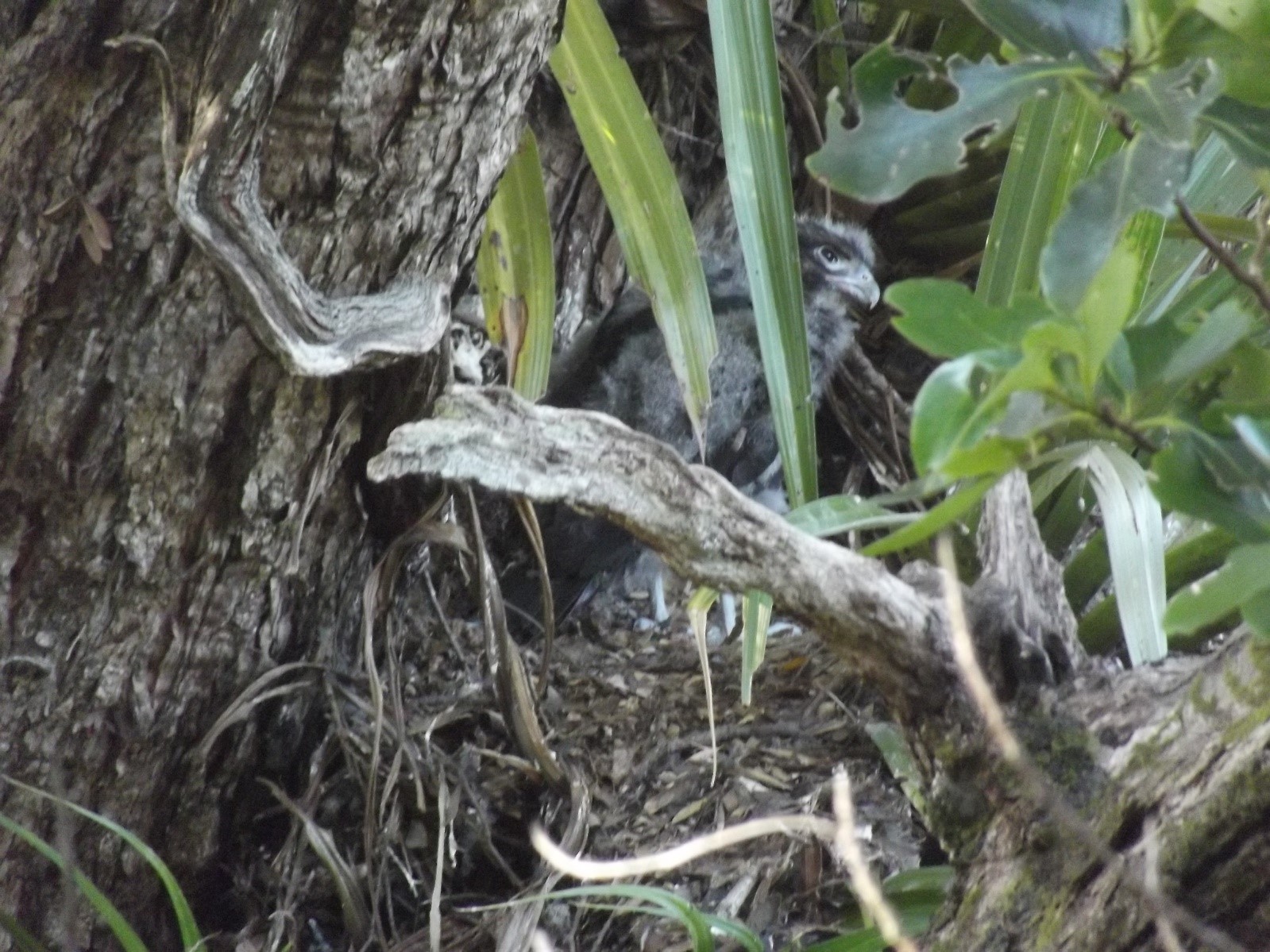Kārearea establishing south of Paraparaumu
Article collated by Helen Bathurst from A Rocha’s Wellington local group.
Falcon discovery
A Rocha’s Wellington local group’s Kapiti members Peter and Diana Kiernan live on a bush block south of Paraparaumu where they are engaged in conservation work. In November 2021, they spotted a female kārearea (New Zealand falcon, Falco novaeseelandiae) in a huge rātā. The kārearea mother appeared to be defending the tree, suggesting that there was a nest. An ornithologist they knew confirmed that the female had eggs or chicks because he could see on the bottom third of her front that the feathers were fluffed up.
The Falco novaeseelandiae is New Zealand’s only falcon. Other common names for the bird are bush hawk and sparrow hawk. It is frequently mistaken for the larger and more common swamp harrier. It is the country’s most threatened bird of prey, with only around 3000–5000 breeding pairs remaining.
We thought that the chicks may not have survived the storms in December. However, mum and dad kārearea continued to guard the rātā tree. This gave us hope that there was still at least one chick surviving. Nestlings are fed by both parents but the male does most of the hunting with the female guarding close to the nest until the nestlings are close to fledging.
Falcon delight
On 10 January, Peter finally managed to use a ladder to get a camera 10 metres up into an adjacent tree. He caught a picture with the chick looking up at the right moment. Notice its downy feathers.

About a week later on 16 January, three birders doing a quarterly bird count saw the adult kārearea interacting in flight with a smaller kārearea. Fledglings are taught how to receive prey from their parents in mid-air – it is called a ‘food pass’. A photo of the kārearea chick shows it looking more mature than it did a week earlier.

The fledgling flew on 16 January 2022, exactly 9 weeks (63 days) after the nest was discovered on 14 November 2021. It seems likely that the chick is a female (which is larger than the male). The chick was named Kiekie.
During its early flight days, a flock of magpies were seen chasing Kiekie. However by early March, she was seen pursuing a magpie in the opposite direction. At this point, Kiekie has expanded her territory to about 1 km2. The young falcon can often be seen roosting on top of the house and keeping an eye on anyone visiting. Occasionally the ‘kiekie’ call of an adult raptor is heard joining the ‘scree-scree’ call of the younger bird.

Photo of the fledgling, taken 20 March 2022, with credit to Joy Glasson, a member of Forest and Bird.
On Tuesday 22 March Peter and Diana were surprised to see Kiekie the kārearea killing a young rabbit in the carpark. She carried it acrobatically through into the lean-to and devoured her lively dinner, smartly sheltered from rain and well-lit from lightning beyond.
On Wednesday 23 March, Diana and Peter were away from the house. The ranch slider door, leading to the deck, was left open. When they came home, they discovered that the young falcon had flown under the shade sail and into the living room. With very little coaxing, the falcon left via another door.

Kiekie, the falcon, on the back of a chair inside the living room on 23 March 2022.
